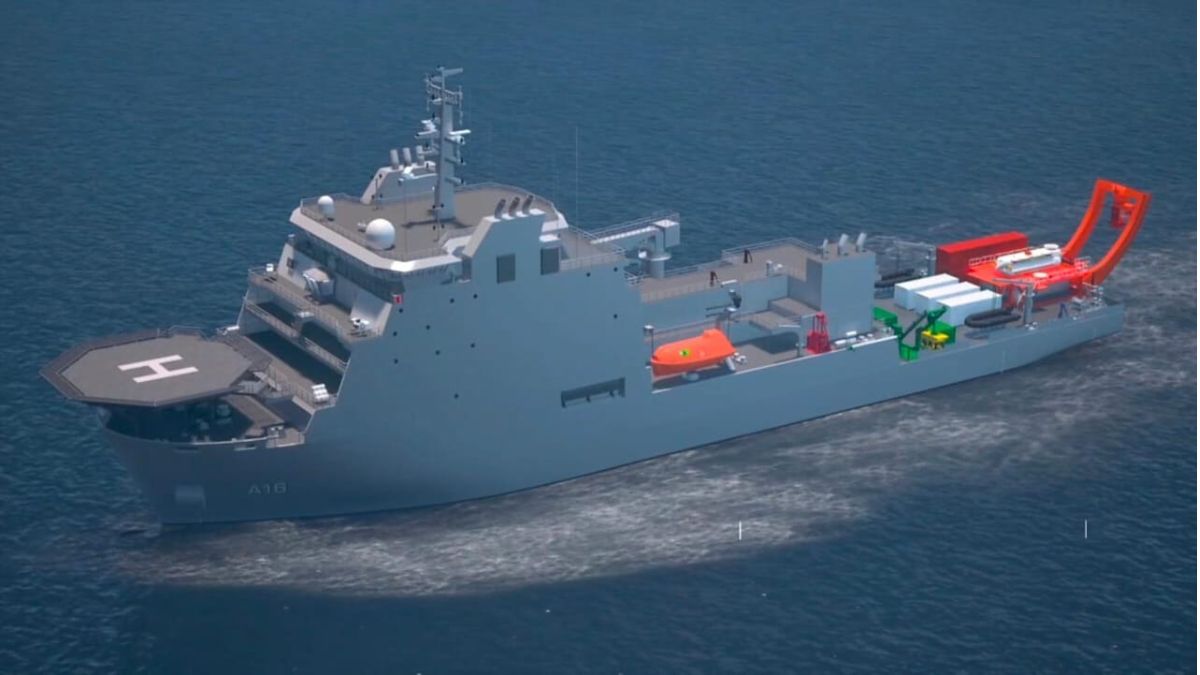India is set to commission Nistar, its first indigenously built Diving Support Vessel (DSV), on Friday (July 18). The ship will significantly enhance the Indian Navy’s capacity to conduct submarine rescue and deep-sea operations, while also positioning India as a key maritime security partner in the Indo-Pacific.
Nistar arrives at a time when submarine activity is increasing across the region, with more navies investing in undersea assets. However, the ability to rescue crews from stricken submarines remains limited.
Even though over 40 nations operate submarines, only six countries currently possess deep submergence rescue capabilities. Now that India has joined the elite group of countries with this ability, it can be a regional provider of maritime security and submarine support.
What makes Nistar strategically important in the Indo-Pacific?
Nistar, designed and developed by Hindustan Shipyard Limited (HSL) is a force multiplier for India’s submarine fleet, offering a dedicated platform for search and rescue operations in underwater emergencies. It is equipped with advanced saturation diving systems and can operate as a mother ship for the Indian Navy’s Deep Submergence Rescue Vehicle (DSRV). In a region where underwater accidents can have serious geopolitical consequences, Nistar provides India with the ability to respond independently and swiftly.
Its commissioning also reinforces India’s growing reputation as a blue water navy—capable not only of deploying submarines, but also of sustaining and rescuing them. This dual capability becomes especially important in contested maritime theatres, where incidents involving undersea platforms could rapidly escalate. In such scenarios, the ability to conduct timely rescue operations could de-escalate tensions and save lives.
How will Nistar counter China’s growing undersea presence?
China has expanded its submarine deployments in the Indian Ocean, including both nuclear-powered attack and ballistic missile submarines. DSV Nistar helps India respond by enhancing its undersea domain awareness and improving safety mechanisms for its own submarines operating in contested waters.
This capability also strengthens deterrence. Unlike Pakistan, which relies on foreign assistance for submarine emergencies, India will now possess independent deep-sea rescue capacity. Nistar’s presence sends a message of readiness and self-reliance to adversaries and partners alike, and supports India’s ability to conduct long-duration deployments in the region.
Can DSV Nistar support India’s diplomatic goals in the region?
Nistar is well positioned to serve as a tool of naval diplomacy. As part of its Net Security Provider doctrine, India has long offered maritime support to smaller and partner nations. With Nistar, India can extend this assistance to submarine operations, offering support to countries such as Vietnam, Indonesia, Myanmar, Malaysia, and Singapore, which operate submarines but lack comprehensive rescue infrastructure.
Joint submarine rescue exercises could be organised with regional partners, helping to build trust and interoperability. In times of crisis, India’s ability to provide quick assistance— particularly to island nations like Sri Lanka or the Maldives— could reinforce its image as a dependable and resident power in the Indian Ocean, unlike extra-regional actors.
Nistar also expands India’s humanitarian assistance and disaster relief (HADR) capacity into the subsea domain. By combining advanced rescue technologies with a willingness to assist regional navies, Nistar serves both strategic and humanitarian objectives, reinforcing India’s position as a responsible power in the Indo-Pacific.
